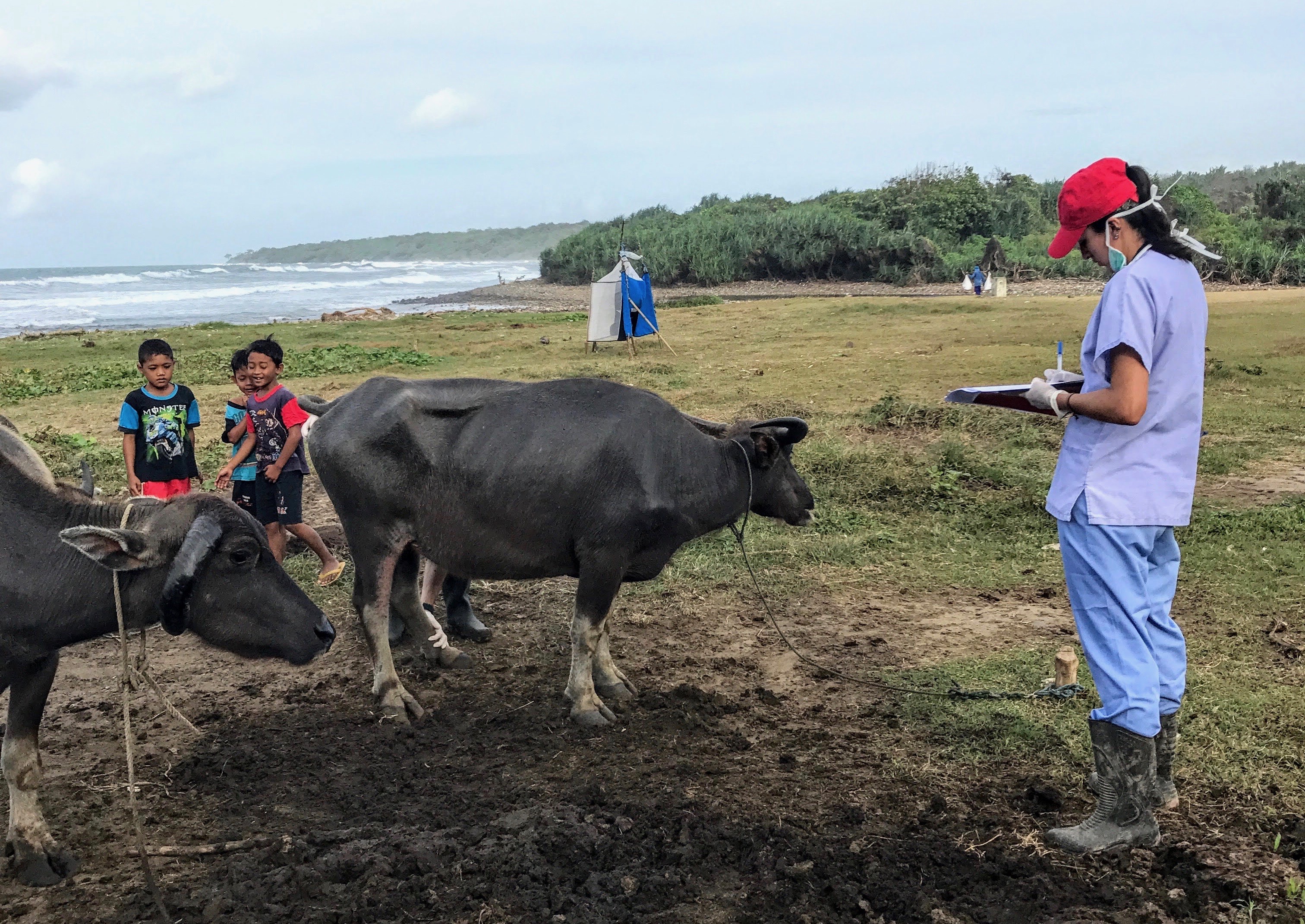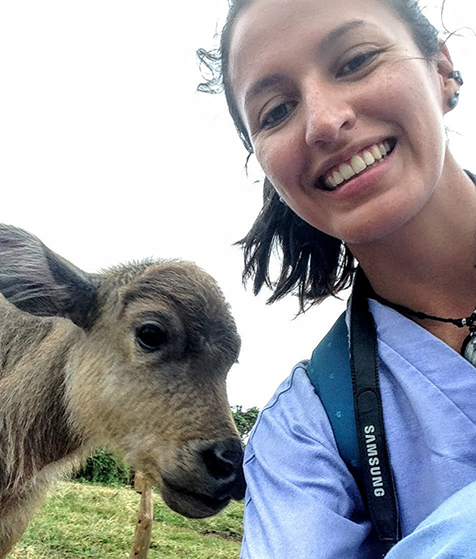Rhinos, Buffalo and People: A One Health Issue in Indonesia
By Mariacamila Garcia Estrella, Cornell University College of Veterinary Medicine DVM/MPH Candidate '23
A few weeks ago, I learned about trypanosome parasites in parasitology class. As the professor explained what diseases these parasites cause, one species of trypanosome in particular stood out to me, Trypanosoma evansi. T. evansi is transmitted by tabanid flies and is found throughout Africa, Asia and tropical America, and it causes a disease called surra in all domestic species. Surra is characterized by chronic wasting, fever, lethargy, weakness and anemia, and can be fatal unless treated.
This disease stood out to me because I saw first-hand the implications it can have for both people and wildlife. In 2017, I was fortunate enough to travel to Indonesia, funded by Engaged Cornell, to assist on a Javan rhino conservation project with WWF Indonesia. The Javan rhino is a critically endangered species with only about 72 individuals left in the world, all found in Ujung Kulon National Park on the island of Java. This national park is surrounded by villages where domestic water buffalo are people’s main source of income. Due to habitat fragmentation and encroachment, the rhinos sometimes come in contact with buffalo and people. This leaves them vulnerable to the spread of diseases such as surra.
As an undergrad at the time, I didn’t know much about trypanosomes nor the effect they can have on livestock and wildlife, but this experience definitely opened my eyes to the complexities of this One Health issue. In the project I participated in, I helped the veterinary team perform physical exams on the buffalo to see if they showed signs of wasting. Our team also collected tabanid flies from the surrounding area to test their blood meals for genetic evidence of whether the flies were feeding on both buffalo and rhinos— and thus possibly spreading T. evansi between them. Since the buffalo of this region evolved with this parasite, they often show subclinical infection and are not as widely affected. They can still experience weight loss/wasting, presenting economic challenges for the farmers. However, the rhinos are believed to be much more susceptible to the disease.
We were fortunate to have worked with WWF Indonesia, an NGO with a well-established relationship with this community. While their mission is focused on saving the Javan rhino, WWF recognizes the need to work with these communities to improve their local economies— by providing workshops on sustainable farming practices, alternative livelihoods and more. WWF Indonesia is run entirely by Indonesians. This is where I first appreciated the importance of working with communities to address their needs, while also advocating for wildlife conservation. This is one of the experiences that inspired me to obtain a Master of Public Health and to learn more about production animal medicine while still focusing my efforts on becoming a wildlife veterinarian.
Mariacamila Garcia Estrella, class of 2023, is a dual DVM/MPH student at the Cornell University College of Veterinary Medicine. She obtained her undergraduate degree in Animal Science from Cornell University in 2017. She is interested in wildlife conservation, public health, and One Health, and hopes to combine her passion for helping people and animals as a wildlife veterinarian.
All images provided by Mariacamila Garcia Estrella.


